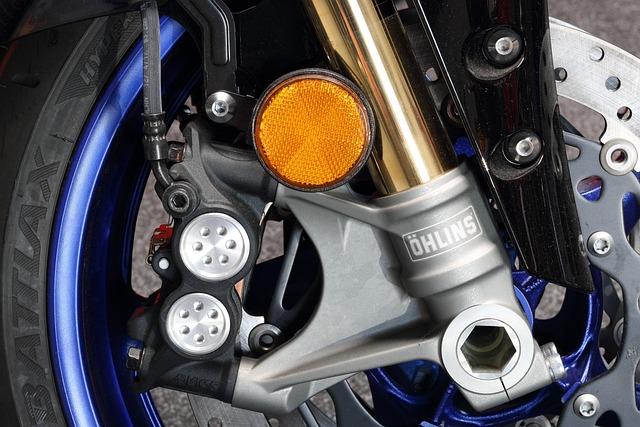Beneath the sleek exterior and roaring engine of your car lies a component often overlooked but vital to your driving experience: the shock absorber. Like a silent guardian, it works tirelessly to cushion the bumps, smooth out the rough patches, and maintain stability on every journey. This unassuming part plays a crucial role in how your vehicle handles the unpredictable rhythms of the road, ensuring comfort, safety, and control with each mile traveled. In this article, we’ll delve into the essential function of shock absorbers, exploring how they transform the chaotic impulses of the road into a steady, controlled ride.
Table of Contents
- Understanding the Essential Function of Shock Absorbers in Vehicle Safety
- How Shock Absorbers Enhance Ride Comfort and Road Handling
- Signs Your Shock Absorbers Need Replacement and How to Test Them
- Comparing Different Types of Shock Absorbers for Optimal Performance
- Maintenance Tips to Extend the Life of Your Shock Absorbers
- Choosing the Right Shock Absorbers for Your Car Model and Driving Style
- Q&A
- In Conclusion
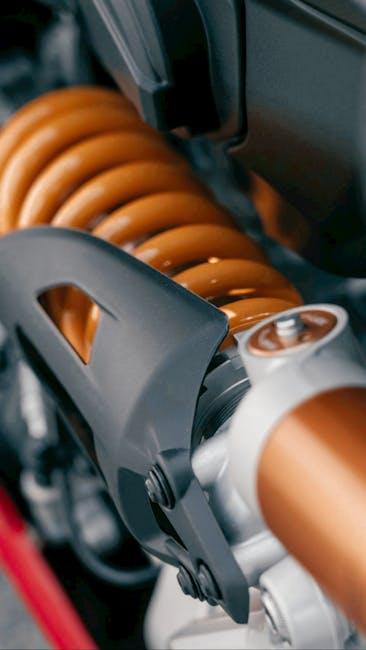
Understanding the Essential Function of Shock Absorbers in Vehicle Safety
At the heart of every smooth ride lies a component working tirelessly behind the scenes: the shock absorber. It acts as the unsung hero, converting the jarring impacts from uneven roads into controlled motion, ensuring that every turn and braking maneuver remains steady and secure. Without this vital mechanism, your tires would bounce uncontrollably, drastically reducing traction and increasing the risk of losing control. In essence, shock absorbers are crucial for maintaining stable contact between the tires and the road, which directly influences your vehicle’s handling and overall safety.
Key benefits of well-functioning shock absorbers include:
- Enhanced vehicle stability during quick maneuvers or sudden stops
- Minimized wear on tires and suspension components
- Reduced risk of hydroplaning on wet surfaces
- Improved passenger comfort by dampening vibrations
| Shock Absorber Type | Performance Advantage |
|---|---|
| Twin-tube | Cost-effective, smooth ride on standard terrain |
| Monotube | Better heat dissipation, ideal for sporty driving |
| Gas-charged | Reduced cavitation, improved response on rough roads |
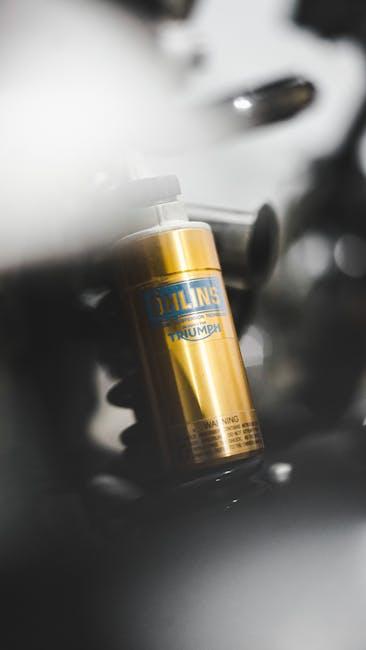
How Shock Absorbers Enhance Ride Comfort and Road Handling
Shock absorbers play a crucial role in smoothing out the bumps and vibrations encountered on the road. By rapidly dissipating the energy generated from road imperfections, they prevent excessive bouncing and jolting, ensuring every journey feels much more controlled and comfortable. This constant movement control minimizes fatigue for both the driver and passengers, turning even the roughest terrains into manageable pathways. The effectiveness of a vehicle’s suspension system largely hinges on the performance of its shock absorbers, acting as the silent guardians of ride quality.
Beyond comfort, shock absorbers significantly enhance road handling by maintaining optimal tire contact with the surface. This consistent grip translates to improved braking, steering response, and overall vehicle stability. The benefits can be summarized as:
- Improved traction: Ensures tires stay firmly planted during acceleration and cornering.
- Reduced body roll: Helps maintain composure during sharp turns, preventing sway.
- Enhanced safety: Contributes to shorter stopping distances and better control in emergencies.
| Benefit | Impact on Driving |
|---|---|
| Smooth Ride | Less vibration and bounce |
| Enhanced Grip | Better traction and control |
| Increased Stability | Predictable vehicle handling |
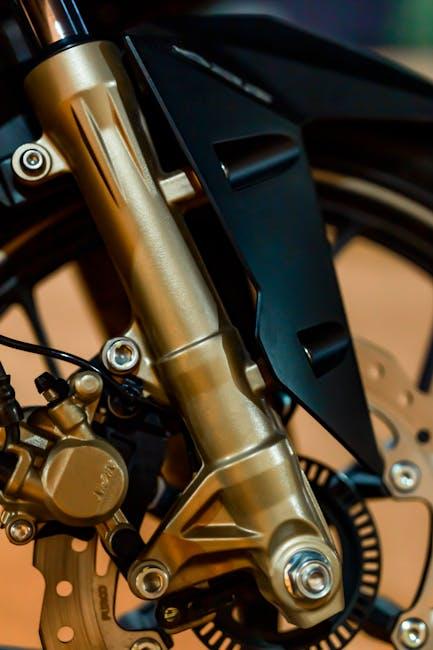
Signs Your Shock Absorbers Need Replacement and How to Test Them
When your vehicle starts to feel like it’s floating over bumps or the steering becomes less responsive, it might be time to give your shock absorbers a closer look. Some telltale signs include excessive bouncing after hitting a pothole, uneven tire wear, or longer stopping distances. You may also notice oil leaks on the shock absorber body or a saggy stance where one corner of the car sits lower than the others. These symptoms not only reduce comfort but can also compromise your vehicle’s safety by affecting traction and control.
Testing your shocks can be a straightforward process that reveals their condition before failure becomes critical. One simple method is the “bounce test”: apply downward force on each corner of your vehicle and release. If the car continues to oscillate more than 2-3 times, the shocks are likely worn out. For a more precise evaluation, specialized shock absorbers pressure testers or professional inspections can diagnose issues such as degraded internal valves or diminished damping ability. Consider keeping an eye out for these indicators regularly, ensuring your driving experience remains smooth and secure.
- Signs to Watch For: Excessive bounce, leaking fluid, uneven tires, nose diving during braking
- Easy In-Home Test: The bounce test—press down and release on each corner
- Professional Check: Use of pressure testers for accurate shock absorber health
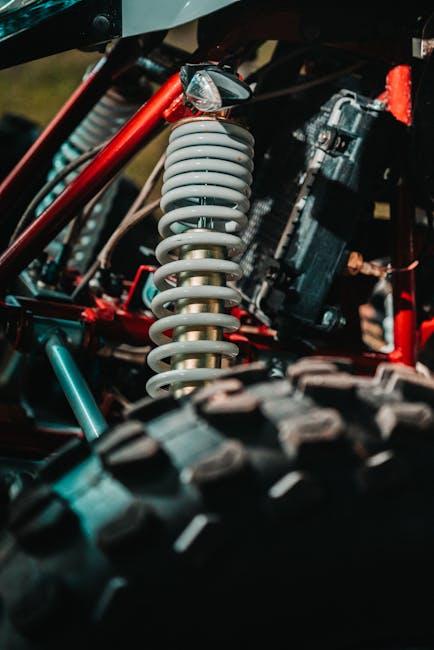
Comparing Different Types of Shock Absorbers for Optimal Performance
When choosing shock absorbers for your vehicle, understanding the nuances between types is crucial for tailoring performance to your driving style. Hydraulic shocks, or twin-tube shocks, offer smooth, predictable handling and are excellent for everyday commuting on paved roads. Meanwhile, gas-charged shocks inject pressurized nitrogen gas to reduce aeration, providing sharper response and better control on uneven terrains. For off-road enthusiasts or those seeking superior performance under demanding conditions, monotube shocks deliver unmatched heat dissipation and longevity, thanks to their single tube design.
To help you visualize their differences quickly, here’s a compact comparison:
| Shock Type | Best Use | Key Advantage | Consideration |
|---|---|---|---|
| Hydraulic (Twin-Tube) | City driving, smooth roads | Cost-effective, comfortable ride | Less heat resistant |
| Gas-Charged | Semi-rough roads, sporty driving | Improved responsiveness | Moderate price point |
| Monotube | Off-road, racing | Durability and heat management | Usually higher cost |
Considerations beyond shock type include compatibility with your vehicle’s suspension, driving conditions, and maintenance capabilities. Properly selecting and maintaining your shocks not only ensures comfort but enhances safety and tire longevity. Always balance performance demands with budget and maintenance to find the shock absorber perfectly aligned with your driving needs.

Maintenance Tips to Extend the Life of Your Shock Absorbers
Regularly inspecting your shock absorbers is essential to keep your vehicle running smoothly. Look out for signs such as uneven tire wear, leaking fluid, or unusual noises when driving over bumps. These indicators often signal that your shocks need attention. Additionally, make sure to keep your suspension components clean, as dirt and debris can accelerate wear and tear. When washing your car, gently rinse the shocks to remove any buildup but avoid using high-pressure water directly on seals to prevent damage.
Driving habits also play a crucial role in preserving shock absorbers. Avoiding harsh potholes and adjusting your speed on rough roads reduces stress on the suspension system. Consider these practical steps:
- Maintain proper tire pressure to reduce strain on shocks.
- Replace shocks in pairs to ensure balanced performance.
- Schedule professional inspections every 20,000 miles or as recommended.
Careful attention to these maintenance practices not only extends the life of your shocks but also enhances overall vehicle safety and comfort.
| Maintenance Task | Frequency | Benefit |
|---|---|---|
| Visual Shock Inspection | Every 10,000 miles | Early detection of wear |
| Tire Pressure Check | Monthly | Reduces suspension stress |
| Shock Replacement | Every 50,000 miles | Maintains ride comfort |
| Professional Suspension Tune-Up | Every 20,000 miles | Optimizes system performance |
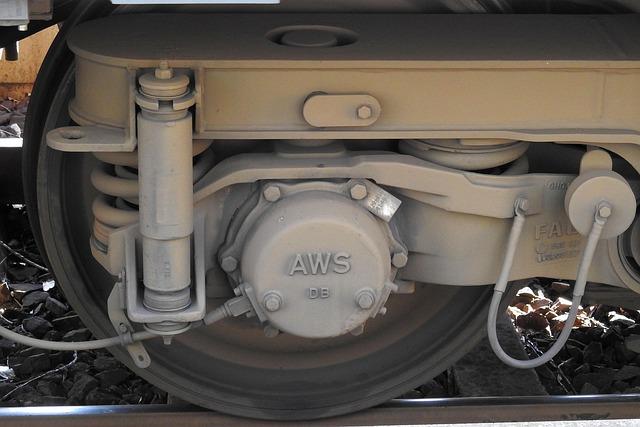
Choosing the Right Shock Absorbers for Your Car Model and Driving Style
Selecting shock absorbers that align perfectly with your vehicle’s specifications and your personal driving habits is essential for maximizing both comfort and safety. Different car models demand different damping characteristics—sports cars often benefit from stiffer shocks for enhanced handling, while family sedans may prioritize softer absorbers to smooth out daily commutes. Consider variables such as load capacity, suspension design, and terrain preferences. For example, if you frequently navigate bumpy or off-road environments, opting for heavy-duty or gas-charged shocks can provide better resistance to wear and improved control.
When choosing your shock absorbers, it’s helpful to evaluate these key features:
- Type of shock absorber: Twin-tube, monotube, or adjustable options cater to different performance needs.
- Driving style compatibility: Aggressive drivers may prefer performance shocks, while casual drivers might opt for standard comfort models.
- Durability requirements: Consider shocks with reinforced components if you drive in harsh conditions regularly.
| Driving Style | Recommended Shock Type | Key Benefit |
|---|---|---|
| Urban/Commuting | Standard Twin-tube | Enhanced comfort on city roads |
| Sporty/Aggressive | Performance Monotube | Improved handling and stability |
| Off-road/Heavy Load | Heavy-duty Gas-charged | Durability and better shock absorption |
Q&A
Q&A: The Role of Shock Absorbers in Your Car
Q1: What exactly are shock absorbers, and where are they located in a car?
A1: Shock absorbers are vital components of your car’s suspension system. They are typically found near each wheel, connected between the axle and the frame. Their primary job? To control the impact and rebound movement of your vehicle’s springs and suspension, ensuring a smooth and stable ride.
Q2: How do shock absorbers work?
A2: Imagine driving over a pothole. Without shock absorbers, your car would bounce wildly. Shock absorbers use hydraulic fluid inside a cylinder and a piston to slow down and dampen these movements. When your car hits a bump, the piston inside the shock absorber compresses and forces fluid through tiny holes, converting kinetic energy into heat and controlling the car’s bounce.
Q3: Why are shock absorbers important for safety?
A3: Shock absorbers keep your tires firmly planted on the road. This improves traction, handling, and braking performance. Without them, your car could sway, skitter, or lose control during sharp turns or sudden stops—significantly increasing the risk of an accident.
Q4: Can I drive without shock absorbers?
A4: Technically, yes—but it’s unsafe and uncomfortable. Without shock absorbers, your vehicle would have poor stability, increased stopping distances, and uneven tire wear. Plus, the ride would feel harsh and uncontrolled, making every bump and pothole a jarring experience.
Q5: How do I know if my shock absorbers need replacing?
A5: Signs include excessive bouncing after hitting a bump, nose-diving during braking, uneven tire wear, fluid leaks on the shock body, and a generally jiggly or unstable ride. If you notice these symptoms, it’s time for a professional inspection.
Q6: How often should shock absorbers be replaced?
A6: Shock absorber lifespan varies with driving conditions and vehicle type but generally falls between 50,000 and 100,000 miles. However, regular checks during routine maintenance are wise to catch early wear before performance declines.
Q7: Are all shock absorbers the same?
A7: No, shock absorbers come in different types like hydraulic, gas-charged, and adjustable models, each designed for specific driving needs. Some offer more comfort, others prioritize sporty handling or heavy-duty durability.
Q8: Can upgrading shock absorbers improve my driving experience?
A8: Absolutely! High-quality or performance shock absorbers can enhance ride smoothness, control, and responsiveness. For enthusiasts or those tackling rough terrain, upgrading can make a noticeable difference in comfort and confidence behind the wheel.
Shock absorbers might be hidden out of sight, but their role is front and center in keeping your ride smooth, safe, and reliable. Understanding them helps you appreciate the science beneath every twist and turn of your journey.
In Conclusion
In the grand symphony of your car’s mechanics, shock absorbers play a subtle yet indispensable tune—smoothing the bumps, steadying the ride, and quietly ensuring every journey is as safe and comfortable as possible. While they may not steal the spotlight, understanding their role empowers you to appreciate the nuanced engineering beneath your wheels. So next time you glide effortlessly over a rough road or navigate a sharp turn with confidence, remember—the humble shock absorber is working diligently to keep you balanced, connected, and in control. After all, in the story of your car’s performance, they are the unsung heroes cushioning every mile.

